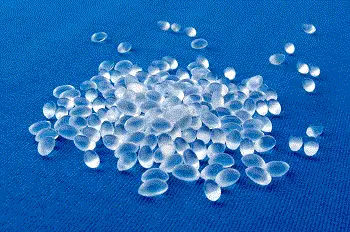Thermoplastic Polyurethane (TPU)
Thermoplastic polyurethane or TPU, is a fully thermoplastic elastomer. It is elastic, melt-processable and can be processed on extrusion, blow, injection and compression molding equipment. Like all materials, thermoplastic polyurethane has its advantages and disadvantages.

Advantages of Thermoplastic Polyurethane
The number of advantages outweighs the number of disadvantages. This revolutionary product is ideal when you examine all the benefits more closely. Below are some of the advantages of Thermoplastic Polyurethane.
- It can be vacuum-formed or solution coated. TPU is suitable for a wide variety of fabrication methodologies.
- TPU can be colored. It has to go through a number of processes for the coloring to take place but the coloring is better than any other thermoplastic elastomer.
- There are a number of physical property combinations making the product very flexible and adaptable to dozens of uses. This is mainly because Thermoplastic polyurethane is considered to be a linear segmented block copolymer that is composed of hard and soft segments. The hard segment is either aliphatic or aromatic. The soft segment is either a polyether or polyester type.
- It has a unique structure that allows for greater versatility and has high resilience, good compression set, resistance to impacts, tears, abrasions, weather and hydrocarbons.
- Thermoplastic polyurethane does not use plasticizers. The material gap is bridged between rubbers and plastics with TPU. It can be used as both a hard rubber and a soft engineering thermoplastic.
- Thermoplastic polyurethane is able to be sterilized and easily processed. It can also be welded, painted, printed and die-cut.
- It has low temperature flexibility. Some TPU grades exhibit biocompatibility, optical clarity, hydrolytic stability and flame retardant or anti-static properties.
Disadvantages of Thermoplastic Polyurethane
Thermoplastic polyurethane has several advantages and looks like the ideal product; however, there are disadvantages to consider when deciding on the usage of TPU. Some of the disadvantages of Thermoplastic Polyurethane are listed below.
- Some grades of TPU have a short shelf life and if not used within that timeframe, they must be disposed of.
- Drying time is required before processing can begin.
- Thermoplastic polyurethane is not as cost-effective as other alternatives and is therefore not always the first option that is used.
Thermoplastic polyurethane applications have a wide array of properties and make it very suitable for numerous products including:
|
Bearings |
Belts | Car bumpers | Computer components |
Containers |
|
Gaskets |
Glass frames | Handbags | Floatation devices |
Protective coverings for phones |
Because it is so versatile it can be used in a number of ways. The disadvantages are few and can easily be worked around to use such a dynamic product for many applications.
